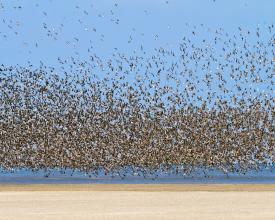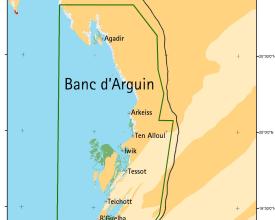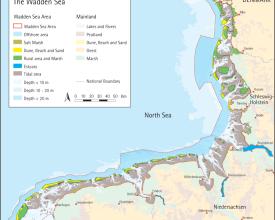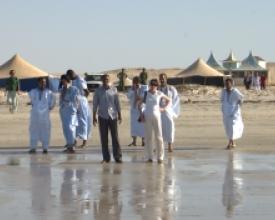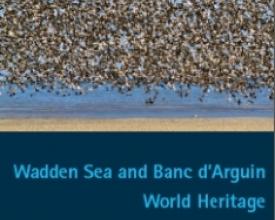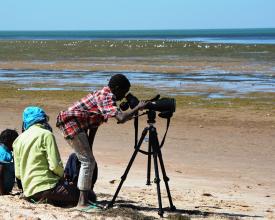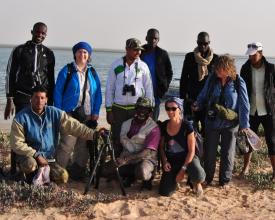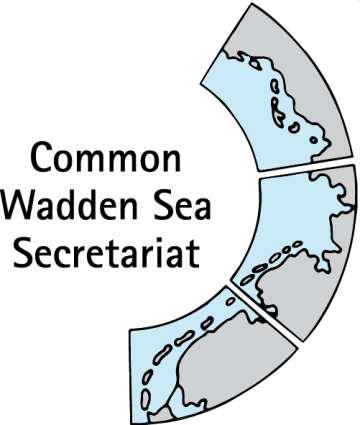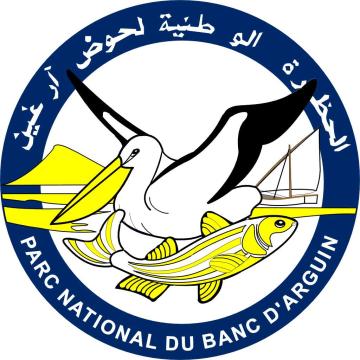
Partenariat sur la voie de migration de l'Atlantique Est pour la conservation des écosystèmes des estrans Banc d'Arguin - mer des Wadden
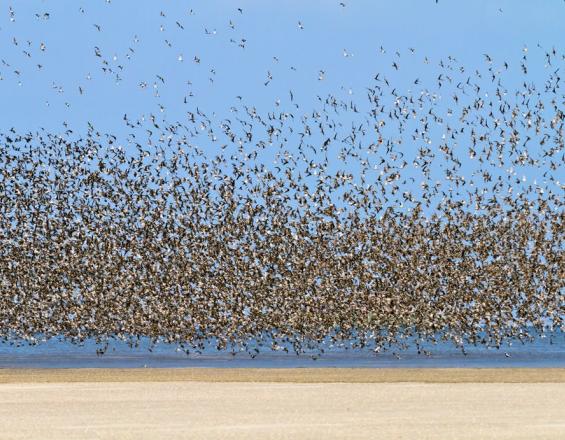
La mer des Wadden (DK, DE, NL) et le parc national du Banc d'Arguin (PNBA) en Mauritanie - deux biens du patrimoine mondial liés par les oiseaux migrateurs de la voie de migration Afrique-Eurasie, pour lesquels ils servent d'importantes zones d'hivernage et d'escale - ont signé un protocole d'accord en 2014 pour protéger les oiseaux migrateurs. Depuis, il y a eu des visites bilatérales de gestionnaires et de scientifiques, un plan d'action commun et une coopération dans la surveillance des oiseaux. En outre, le PNBA a joint l'initiative de la voie de migration de la mer des Wadden, lancée pour renforcer la conservation et la surveillance des oiseaux d'eau le long de la voie de migration de l'Atlantique Est.
Contexte
Défis à relever
-
Absence de vue d'ensemble des menaces et des risques pour les oiseaux migrateurs le long de la voie de migration de l'Atlantique Est
-
Faible sensibilisation du public et des décideurs à l'importance de la migration des oiseaux et des sites du patrimoine mondial
-
Absence de méthodes et de calendriers harmonisés de collecte de données le long de la voie de migration de l'Atlantique Est pour surveiller la population d'oiseaux migrateurs dans son ensemble
-
En partie manque de capacité, de connaissances et de compétences pour gérer la zone protégée du Banc d'Arguin
Emplacement
Traiter
Résumé du processus
Tous les éléments constitutifs sont interdépendants : Le protocole d'accord est la base juridique de tous les aspects de la coopération. Les efforts de communication conjoints informent les décideurs politiques, le public et les parties prenantes sur la coopération scientifique et l'échange de savoir-faire, tout en montrant l'importance d'une coopération entre les deux sites pour la biodiversité. Les projets scientifiques communs renforcent la coopération dans les domaines de la science et de la recherche, ainsi que de la gestion et de la conservation des sites. Ils créent en outre un réseau de parties prenantes qui soutiennent le protocole d'accord et contribuent à la communication.
Blocs de construction
Protocole d'accord
En 2014, la Coopération trilatérale de la mer des Wadden, représentée par le Secrétariat commun de la mer des Wadden, et le Parc national du Banc d'Arguin ont signé un protocole d'accord pour protéger les millions d'oiseaux qui voyagent entre leurs sites chaque année.
Facteurs favorables
Définir des questions communes et des objectifs conjoints.
Leçon apprise
Le MoU est la base écrite de la coopération entre les deux sites et quatre pays en matière de conservation de la nature et de l'avifaune. Dans le cadre du protocole d'accord, le parc national du Banc d'Arguin a rejoint l'initiative de la voie de migration de la mer des Wadden.
Communication et apparence communes
Diffusion conjointe d'informations et apparition conjointe au niveau national et international pour informer sur les oiseaux migrateurs et leurs habitats afin de sensibiliser à l'importance de leur protection. Une exposition sur les oiseaux migrateurs à l'ITB Berlin 2017 et un dépliant commun en sont des exemples.
Facteurs favorables
Définir des questions communes et des objectifs conjoints.
Leçon apprise
La communication conjointe permet de sensibiliser davantage l'opinion publique internationale.
Ressources
Échange de savoir-faire
Visites d'échange régulières et échange de savoir-faire entre les experts et les gestionnaires de sites. Ces réunions sont un moyen de renforcer les capacités avec des valeurs et des méthodes harmonisées enseignées et pratiquées à la fois au Banc d'Arguin et dans la mer des Wadden. Les méthodes communes de surveillance et de gestion sont harmonisées et un niveau partagé de connaissance et de compréhension est créé. Les participants sont des scientifiques, des gestionnaires de sites et d'autres experts des zones protégées respectives.
Facteurs favorables
Les visites d'échange d'experts et de gestionnaires sont financées par la Coopération trilatérale de la mer des Wadden et les partenaires dans les pays, par exemple les parcs nationaux. Dès le début, tous les partenaires régionaux et nationaux du protocole d'accord ont compris les avantages qu'il y avait à améliorer la conservation de leurs biens du patrimoine mondial et en particulier des oiseaux migrateurs le long de la voie de migration de l'Atlantique Est.
Leçon apprise
Les différences culturelles conduisent à une compréhension différente de la conservation et de la gestion de la nature. Par exemple, les différents points de vue sur la conservation de la nature doivent être reconnus sur les deux sites afin de définir des objectifs communs et des méthodes de gestion des sites.
Coopération scientifique
Programmes conjoints de surveillance des oiseaux migrateurs et soutien de projets scientifiques et de gestion communs visant à promouvoir la conservation et la gestion des ressources naturelles de la mer des Wadden et du Banc d'Arguin. L'ambition est que les deux sites prennent la tête des comptages simultanés le long de l'ensemble de la voie de migration de l'Atlantique Est afin d'obtenir une image complète de l'état des populations d'oiseaux migrateurs empruntant la voie de migration. La recherche sur les oiseaux migrateurs dans la mer des Wadden et au Banc d'Arguin est étroitement liée et importante pour tous les autres sites d'hivernage, de reproduction et de repos le long de la voie de migration. Ainsi, seule la coopération scientifique peut permettre d'obtenir une perception holistique de la voie de migration et une base commune pour une gestion réussie.
Facteurs favorables
Partage des questions de recherche et des similitudes entre les sites naturels.
Leçon apprise
Les différences culturelles conduisent à une compréhension différente de la surveillance et de la recherche scientifique, par exemple les différentes approches de la recherche scientifique et de la surveillance ont dû être examinées et discutées pour trouver une voie commune.
Impacts
Depuis 2014, le protocole d'accord a permis de partager les connaissances et l'expérience dans les domaines de la conservation, de la gestion et de l'utilisation durable des écosystèmes des zones intertidales. La communication et la sensibilisation ont été renforcées pour parvenir à une compréhension de la nécessité de gérer et de conserver les oiseaux migrateurs à l'échelle mondiale. Les activités de recherche ont été soutenues. Le MdA a encouragé et soutenu la coopération entre les parties prenantes et les organisations le long de la voie de migration. En outre, il a soutenu la mise en œuvre de la Convention du patrimoine mondial.
Bénéficiaires
Communautés locales, populations autochtones du Banc d'Arguin, parcs nationaux
Histoire

La surveillance et la protection efficaces des oiseaux migrateurs le long d'une voie de migration ne peuvent se faire en ne considérant qu'une seule des nombreuses étapes de leur itinéraire et doivent être envisagées dans leur ensemble. Le Dr Jutta Leyrer, de la mer des Wadden, a suivi cette approche holistique dans sa recherche doctorale sur les sous-espèces de bécasseaux maubèches afro-sibériens. Ces oiseaux dépendent fortement du Banc d'Arguin en Mauritanie, qui est leur principal site d'hivernage, et de la mer des Wadden, qui est leur principal site d'étape pendant la migration. M. Leyrer a donc exploré les deux sites, en se rendant fréquemment dans le parc national de Mauritanie entre 2003 et 2009. "Au cours de ces années, j'ai appris l'importance de l'endurance", explique M. Leyrer : "Le fait de visiter fréquemment le site sur une longue période m'a permis d'établir des relations durables avec les personnes présentes sur place. Cela a montré à mes collègues mauritaniens que je m'engageais dans l'échange".
En 2014-2015, elle est retournée en Mauritanie en tant qu'experte intégrée pour le CIM Centre for International Migration afin de travailler avec la GIZ pour aider à la mise en place d'une structure administrative. Dans le même temps, à la demande de l'UNESCO, la Coopération trilatérale de la mer des Wadden et le Parc national du Banc d'Arguin ont exploré l'idée d'établir une coopération plus forte à l'aide d'un protocole d'accord. Leyrer, qui connaît bien les deux sites et leurs communautés, est devenu l'intermédiaire et la pièce essentielle sur la voie de la signature du protocole d'accord en 2014.
"À mes yeux, le protocole d'accord témoigne avant tout d'un engagement", ajoute M. Leyrer : "Les États concernés ont signé un engagement à long terme en faveur d'une collaboration mutuellement bénéfique. Un tel document est très utile pour travailler sur les aspects pratiques de l'échange, en particulier lorsqu'un soutien financier et des ressources en personnel à long terme sont nécessaires. Il s'agit d'un avantage majeur par rapport aux projets de développement conventionnels, plutôt à court terme."
Aujourd'hui, Mme Leyrer travaille à l'Institut Michael-Otto- de l'ONG allemande NABU (Birdlife Allemagne) et entretient ses liens avec l'initiative de la voie de migration de la mer des Wadden, qui vise à renforcer la conservation et la surveillance des oiseaux d'eau le long de la voie de migration de l'Atlantique Est et qui est liée au protocole d'accord : "Le protocole d'accord est sans aucun doute un premier pas et il a donné lieu à des échanges de gestionnaires de sites et de chercheurs. Cependant, la plupart de ces voyages se sont déroulés dans une seule direction : de la mer des Wadden au Banc d'Arguin. En fin de compte, nos collègues mauritaniens devraient également se rendre fréquemment dans la mer des Wadden. C'est un objectif que nous devons encore atteindre. Mais grâce au protocole d'accord, nous disposons d'une perspective à long terme pour l'atteindre.
